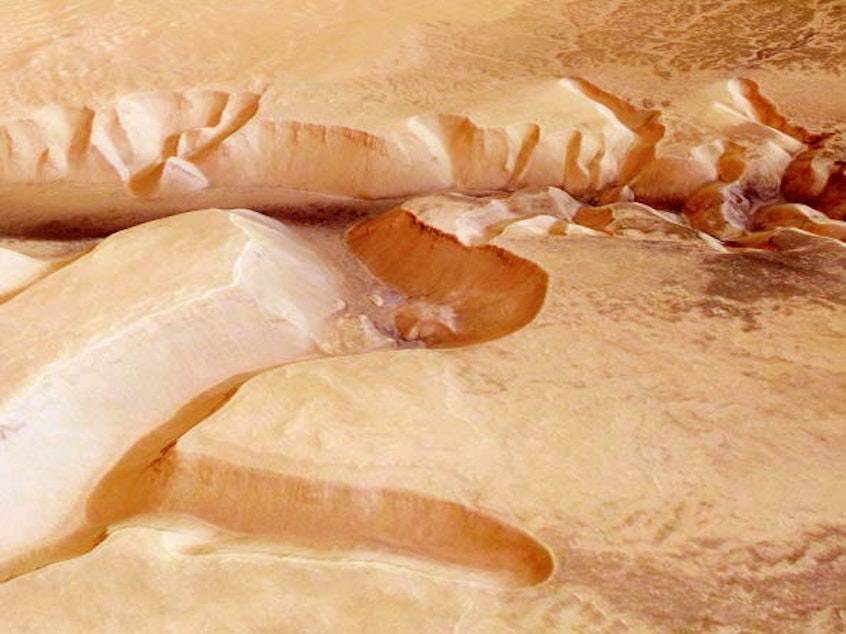Tune in for a livestream from Mars — a rare, almost real-time look into space

Taking a picture of Mars is not easy.
Once light bounces off the planet, it can take between 3 to 22 minutes to travel to Earth — so there aren't truly "live" images of Mars.
But on Friday 12 p.m. ET, spectators will have a chance to see the most current images of Mars possible with the help of the European Space Agency.
The ESA will offer the first "livestream" of Mars on YouTube, by posting pictures of the planet every 50 seconds as they are beamed down directly from the space agency's camera, which is mounted on the Mars Express orbiter. The livestream will be an hour long.
The livestream celebrates the 20th anniversary of the Mars Express mission, which launched in 2003 to better understand the planet, as well as search for traces of water.
Sponsored
Live footage from deep space is rare
There are only a few examples of "live" footage in space, including the famous Apollo missions showing astronauts walk on the moon's surface, as well as the DART and LCROSS missions where NASA intentionally crashed spacecrafts into asteroids and the moon, respectively, the ESA said in a press release.
"These missions were all pretty close to home and others farther away sent perhaps an image or two in near real-time," the ESA said. "When it comes to a lengthy livestream from deep space, this is a first."
Most observations and data gathered by spacecrafts are beamed down to Earth a few hours or even days later — which isn't generally an issue for scientists.
In fact, though the speed of light can make livestreams difficult, in other cases, it has been a boon for scientific discovery.
Sponsored
Take the Euclid mission. The telescope will capture light that has been traveling for 10 billion years, allowing scientists to see 10 billion years into the past, the ESA said. [Copyright 2023 NPR]



